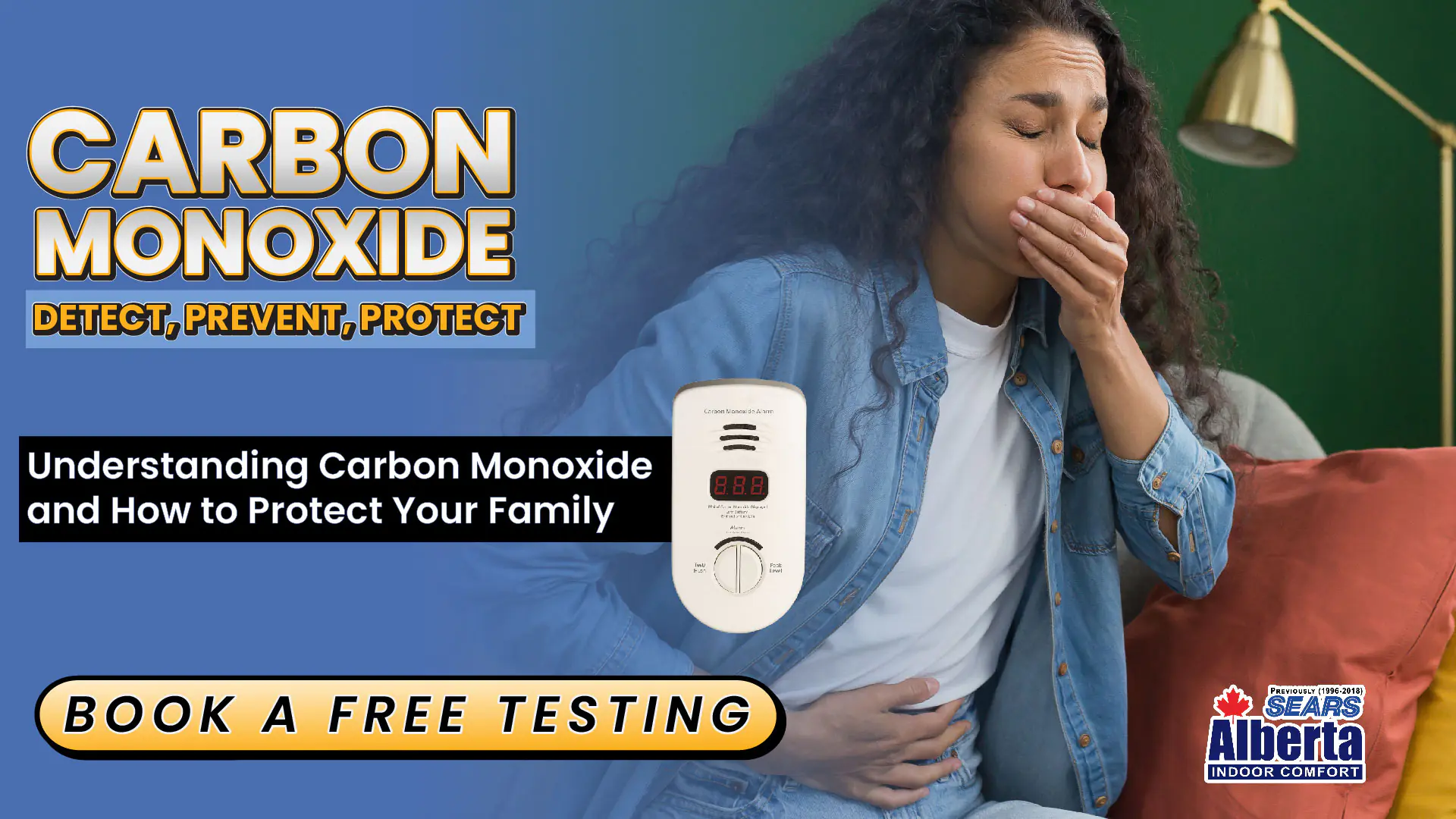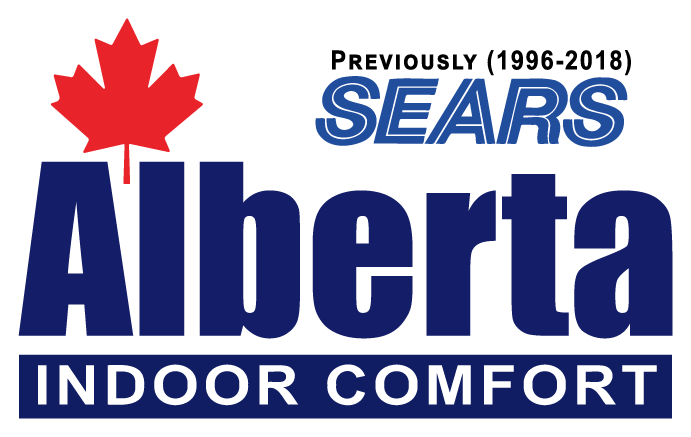
The Hidden Danger in Calgary Homes:
Understanding Carbon Monoxide and How to Protect Your Family
Carbon monoxide often called the silent killer is one of the most dangerous indoor air threats for Calgary homes. You cannot see it. You cannot smell it. You cannot taste it. Yet even small amounts can build up indoors and cause serious and sometimes fatal health effects within minutes to hours.
Because Calgary winters keep our windows closed and our heating systems running for months at a time, the risk of carbon monoxide buildup increases significantly. Understanding how carbon monoxide works, where it comes from, and how to prevent it is essential to keeping your family safe.
What Is Carbon Monoxide and Why Is It So Dangerous?
Carbon monoxide is a gas produced when fuel does not burn completely. This can happen in furnaces, fireplaces, water heaters, stoves, wood-burning appliances, space heaters, vehicles, and generators.
When inhaled, carbon monoxide replaces oxygen in your bloodstream. This prevents your organs from getting the oxygen they need to function. The brain and heart are the first to feel the impact because they rely heavily on oxygen to operate.
Even low exposure can trigger symptoms that look like common seasonal illnesses such as the flu or a cold. This is why carbon monoxide poisoning is often missed until severe symptoms occur.

Symptoms of Carbon Monoxide Exposure
Early symptoms may include:
- 1Headache
- 2Fatigue or general tiredness
- 3Shortness of breath
- 4Dizziness or lightheadedness
- 5Nausea or stomach discomfort
- 6Feeling confused or foggy
At higher exposure levels or with prolonged exposure, the effects can escalate quickly:
- 1Fainting or collapsing
- 2Chest pain
- 3Severe confusion
- 4Loss of muscle control
- 5Convulsions
- 6Coma
- 7Death due to respiratory failure
Children, seniors, people with asthma, and pregnant women are at higher risk. Carbon monoxide poisoning affects them faster because their bodies require more oxygen to function properly.
How Fast Can Carbon Monoxide Become Dangerous Indoors?
Carbon monoxide can reach harmful levels surprisingly quickly depending on the concentration in the air.
- At 400 ppm: Headache and nausea in 1 to 2 hours.
Life-threatening after 3 hours.
- At 800 ppm: Headache and dizziness in 45 minutes.
Unconsciousness within 2 hours. Possible death within 3 hours.
- At 1,600 ppm: Severe symptoms in 20 minutes.
Death possible in less than 2 hours.
- At 6,400 ppm or higher: Symptoms within minutes.
Death can occur in under 20 minutes.
This is why immediate evacuation and ventilation are critical when a carbon monoxide alarm sounds. You cannot wait to see if symptoms develop.
Common Sources of Carbon Monoxide in Calgary Homes
Carbon monoxide issues typically come from fuel-burning appliances and heating systems. Common sources include:
Scheduling an annual furnace safety inspection is one of the most effective ways to prevent carbon monoxide buildup, especially during Calgary’s long heating season.
Preventing Carbon Monoxide Buildup in Your Home
You can greatly reduce the risk of carbon monoxide exposure with a few key safety practices:
1) Install and Test Your Carbon Monoxide Alarms
Every residence needs to have functioning detectors on each level and near all sleeping areas. If alarms are either absent or no longer current, we can assist with the installation of carbon monoxide alarms.
2) Maintain Your Heating and Ventilation Systems
It’s essential to have your furnace and water heater inspected once a year to ensure safe combustion and sufficient airflow. If you detect the odor of furnace exhaust, feel drafts, or hear unusual sounds, you should schedule emergency heating repairs immediately.
3) Improve Indoor Air Quality
More Indoor Air Quality Solutions
If the air inside your home seems heavy, dry, or stale, we can enhance overall comfort with:
Air exchange is essential. We provide whole-house ventilation and HRV systems to introduce oxygen-rich air from outside and minimize the accumulation of CO₂ indoors.

Heating Recovery Venitlation

Duct Cleaning

Humidifier
How Alberta Indoor Comfort Helps Protect Your Home
We provide:
Our technicians are trained to identify and resolve hidden combustion and ventilation issues that can lead to carbon monoxide problems.
Your Home Should Be a Safe Place to Breathe.
If your home has older heating equipment, if you have not had an HVAC tune-up in over a year, or if you have experienced symptoms that come and go depending on where you are in the house, it is worth getting your air quality checked.
Breathing should never be stressful.
Related Articles:
We Specialize in Senior Accessibility
Give us a call to find out more about how we help with age-in-place


What is real comfort and safety ?
Real comfort is going home from work in the winter and be in your most favorite and most comfortable clothing. Real comfort is taking a shower without worrying of running out of hot water.
Real comfort and safety is getting great rest at home without worrying about your system breaking down. To some, if not all, real comfort is having total control of the temperature at home, be it for heating or cooling, when you need it.
Each of us has our own definition of comfort and safety because we have different needs and wants. Different needs requires different solutions. Solutions that will bring real comfort and safety.
Have a question?
let us know how we can help with all your home maintenance, Service & repair needs

KEEP WARM
AND COOL
Real comfort and safety from having total control of your home's temperature, heat and cool, whenever and wherever you need it.

HAVING GREAT
INDOOR AIR
Real comfort and safety from particulates, bacteria and viruses we don't see. Reducing health risk by creating a healthier, clean air.
SAVE MONEY ON
UTILITIES
Real comfort and safety from reducing cost of utilities, having more purchasing power on more important needs of the family.

COMFORT & SAFETY
AS GIFTS
Real comfort and safety can be shared to your family, love ones, friends and colleagues. Great news is always meant to be shared.
Consult our Experts to enhance your home to a great learning environment.
DID YOU KNOW ?
More studies show that cognitive function was shown to be up to 50% worse in environments with higher carbon dioxide concentration, which is a symptom of insufficient make up air.

















